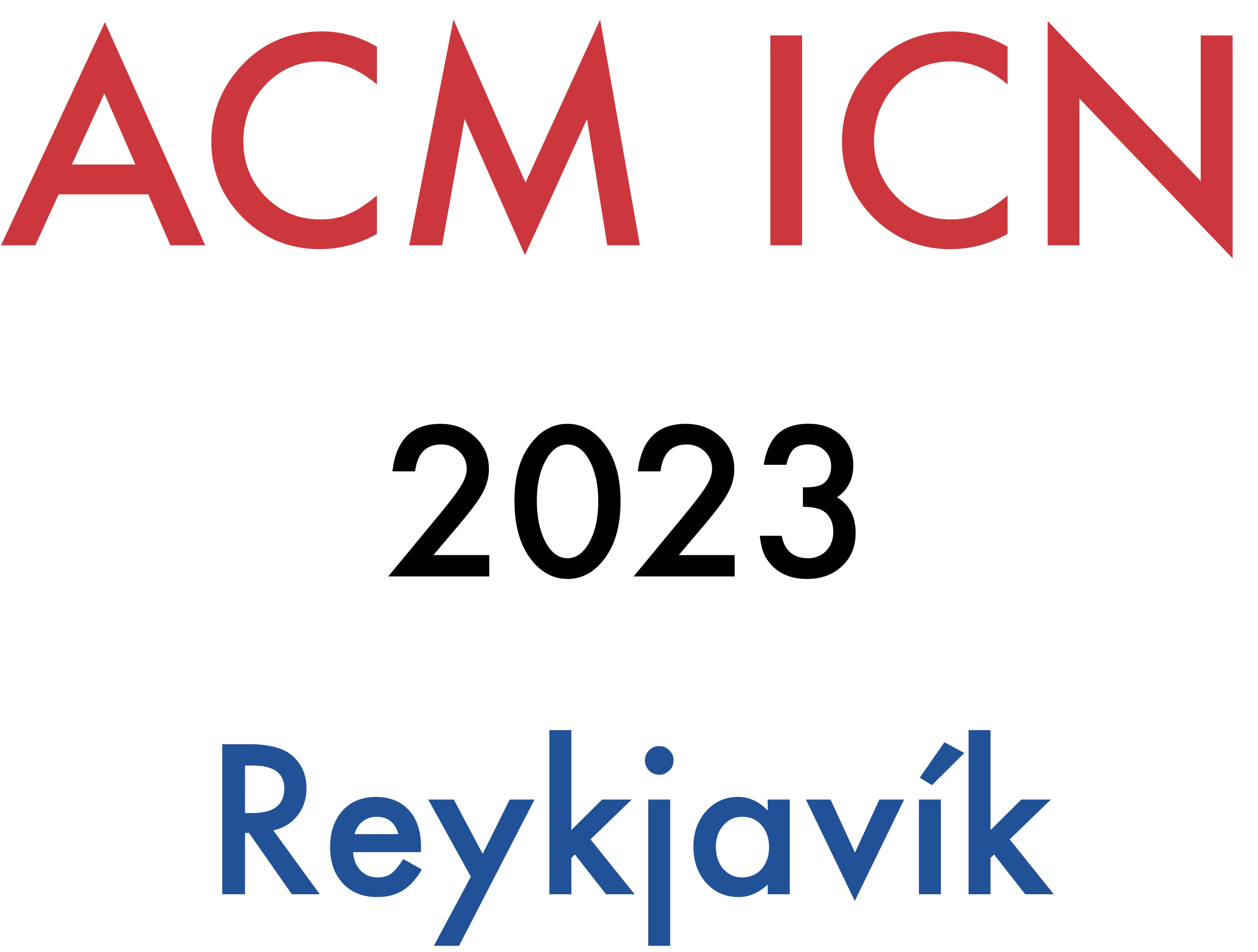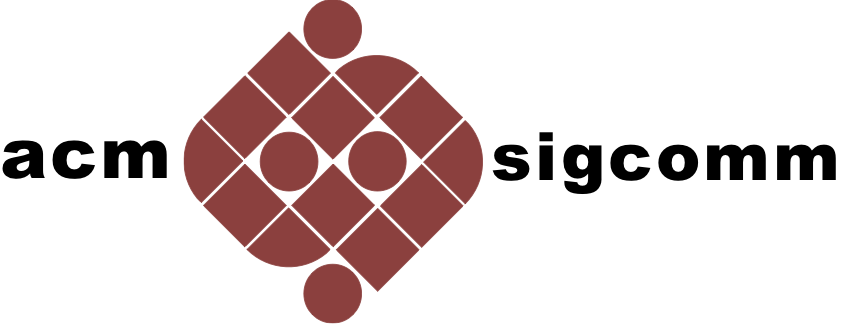10th ACM Conference on Information-Centric Networking (ICN 2023)
List of Accepted Papers
-
Capture and Analysis of Traffic Traces on a Wide-Area NDN Testbed
Sankalpa Timilsina (Tennessee Technological University), Davide Pesavento and Junxiao Shi (NIST), Susmit Shannigrahi (Tennessee Technological University), and Lotfi Benmohamed (NIST)
-
Abstract:
High-quality network traffic measurements from realistic network deployments are needed to analyze and better understand emerging network technologies for the purpose of maturing them. However, achieving this measurement goal for the Named Data Networking (NDN) technology remains a challenge mainly due to the lack of real-world deployments. To address this gap, we have created a dataset of NDN traffic traces and a software toolkit for capturing, analyzing, and replaying these traces. Our dataset, derived from real-world NDN routers on the NDN testbed, is the first non-synthetic dataset publicly available to the research community. This paper presents the dataset and the tools, discusses its properties, and shares insights applicable to other NDN research.
-
-
Mnemosyne: Distributed Application Logging over Named Data Networking
Siqi Liu and Lixia Zhang (UCLA)
-
Abstract:
Logging is crucial for auditing the function and securities of the applications. We designed Mnemosyne, a distributed logger running over Named Data Networking(NDN), to address this need for NDN-based distributed applications. Mnemosyne assures the immutability of logged events by interlocking all event records in a DAG-based blockchain. Mnemosyne provides a high logging throughput and system resiliency against network component failures. We implemented Mnemosyne’s DAG and interface and evaluated our design through an emulated and deployment setting.
-
-
A New API in Support of NDN Trust Schema
Tianyuan Yu and Xinyu Ma (UCLA), Hongcheng Xie (City University of Hong Kong), Yekta Kocaoğullar (Sabancı University, Istanbul), and Lixia Zhang (UCLA)
-
Abstract:
The decade-long experiences from developing applications over Named Data Networking (NDN) have taught us the importance of well-designed libraries that offer support to application developers for data security. While trust schema provides a critical component in NDN security support, its implementation and support only started receiving significant attention recently. This paper first provides a summary of the previous API support for trust schema, and then takes a step forward by introducing Envelope as a new trust schema API. Envelope addresses the application requirements by offering comprehensive trust schema functionalities, an easy-to-write schema language, and an extensible design. To demonstrate the usefulness of Envelope, we develop a blog application which makes use of the our new API. Our results indicate that Envelope provides effective trust schema support for applications with acceptable overhead.
-
-
CCNx Router on FPGA Accelerator Achieving Predictable Performance
Atsushi Ooka and Hitoshi Asaeda (National Institute of Information and Communications Technology (NICT))
-
Abstract:
Information-centric networking (ICN) is a prominent architecture that realizes content-aware network services through name-based communications. A programmable ICN router implemented on a field-programmable gate array (FPGA) accelerator can achieve predictable performance for advanced service requirements, such as low latency and high throughput. However, owing to the tight resource constraints, implementing ICN functions on an FPGA is a huge challenge, as ICN requires frequent update tables for maintaining long and variable-length content names and access to caching devices capable of storing large-volume content. In this study, we designed and implemented an FPGA router that incorporates an ICN by applying the CCNx v.1.0 protocol specification. The FPGA router implemented a unified status table on a large-capacity DRAM that stored 10 million variable-length content name prefixes. Additionally, we introduced a DRAM bank allocation that is unaffected by slow random accesses and reduces table access latency, and a Row–Bank–Column memory address mapping scheme that reduces the access time to heavily loaded in-network cache storage. We present the evaluation results of the proposed architecture implemented on the NetFPGA-SUME board, revealing 10 Gbps or 2.8 Mpps throughput and ≤ 300 ns jitter.
-
-
PCLive: Bringing Named Data Networking to Internet Livestreaming
Teng Liang, Wei Huang, Xinyu Ma, Weizhe Zhang, and Yu Zhang (Peng Cheng Laboratory) and Beichuan Zhang (The University of Arizona)
-
Abstract:
The lack of application support is probably the biggest obstacle to ICN/NDN deployment. One approach to tackle this problem is to NDNizing existing applications by translating between application-level protocols and NDN, which can benefit from NDN’s architectural advantages while minimizing development efforts needed. In this paper, we validate the effectiveness of this approach by applying it to Internet livestreaming, and develop PCLive, a livestreaming system with NDN embedded as its distribution network. PCLive makes minimal changes to an Internet livestreaming architecture, achieving the maximum compatibility with existing components including video players, OBS, and video transcoders. By solving a number of design issues such as HLS/NDN protocol translation, data translation, naming and security, PCLive is able to run over NDN network and enjoy its architectural benefits. Since December 2021, PCLive has been running on an NDN testbed consisting of cloud servers from seven cities. It can serve almost four times as many clients as an existing livestreaming system can over IP under the same network conditions; at the same time, the average throughput of the bottleneck link in the NDN testbed is 34.8% lower than that in IP. We also evaluate congestion control and adaptive forwarding with PCLive.
-
-
SoK: Distributed Computing in ICN
Wei Geng and Yulong Zhang (The Hong Kong University of Science and Technology (Guangzhou)), Dirk Kutscher (Hong Kong University of Science and Technology), Abhishek Kumar (Center for Ubiquitous Computing, University of Oulu), Sasu Tarkoma (University of Helsinki and University of Oulu), and Pan Hui (Hong Kong University of Science and Technology)
-
Abstract:
Information-Centric Networking (ICN) with its data-oriented operation and generally more powerful forwarding layer provides an attractive platform for distributed computing. This paper provides a systematic overview and categorization of different distributed computing approaches in ICN encompassing fundamental design principles, frameworks and orchestration, protocols, enablers, and applications. We discuss current pain paints in legacy distributed computing, attractive ICN features and how different systems make us of them. This paper also provides a discussion of potential future work for distributed computing.
-
-
Pegasus: A High-Speed NDN Router with Programmable Switches and Server Clusters
Xingguo Long (Institute of Computing Technology, Chinese Academy of Sciences, Peng Cheng Laboratory, University of Chinese Academy of Sciences), Kun Huang, Rongwei Yang, and Qingguo Dai (Peng Cheng Laboratory), and Zhenyu Li (Institute of Computing Technology, Chinese Academy of Sciences)
-
Abstract:
Programmable switches provide a solution for implementing high-performance Named Data Networking (NDN) routing systems. However, the challenge arises from the packets in the NDN network that carry hierarchical names of varying lengths, coupled with the inherent limitation of programmable switches in parsing variable-length packet content and storing large NDN routing tables. Therefore, deploying NDN routers based on programmable switches in NDN networks remains a formidable task. To address this issue, we implement a parser that supports variable-length names in a programmable switch, and combine the switch with a commodity server cluster to realize a high-speed NDN routing system capable of simultaneous processing names with different lengths at line rate. In this paper, we introduce the design of our routing system in programmable switches and commodity servers, and experimentally verify it can be scaled to Tbps-scale.
-
-
Investigating the Synergy between Routing and Forwarding Strategy in NDN Networks
Lan Wang and Alexander Lane (University of Memphis), Constantin Serban and Jesse Elwell (Peraton Labs), Alex Afanasyev (Florida International University), and Lixia Zhang (UCLA)
-
Abstract:
Multiple routing protocols and forwarding strategies have been proposed for NDN, but there is a lack of understanding on the synergy between routing and forwarding strategy. In this work, we conduct an investigation into the effectiveness of NDN forwarding strategy, routing, and the combination of the two in maximizing data fetching successes in face of network failures. Through emulation experiments with various network scenarios, we evaluate the ASF forwarding strategy and NLSR routing protocol both independently and jointly. We assess the impact of different network conditions on their effectiveness, reveal the performance tradeoffs made by NLSR and ASF, and provide insights into the design and deployment of routing and forwarding strategies in NDN networks.
-
-
P4-based NDN Tester for Evaluating Forwarder Performance under Non-Uniform Request Patterns
Junji Takemasa (Osaka Univeristy) and Yuki Koizumi and Toru Hasegawa (Osaka University)
-
Abstract:
The implementation of high-speed Named Networking (NDN) /Content Centric Networking (CCN) forwarders has been a hot research issue over the last decade. Many full-fledged software-based forwarders are implemented toward 100 Gbps throughput, and recently, prototypes of some hardware-based forwarders using a P4 switch are being implemented toward more than 1 Tbps throughput. Many studies press stress on NDN forwarders with uniform request patterns. However, such request patterns only allow the maximum throughput to be measured. On the contrary, this paper addresses the generation of non-uniform request patterns at the rate of Tbps to evaluate the throughput of NDN forwarders.
-
-
SoK: On Named Content and Inter-domain Routing
Jeremiah S. Davis and Ken Calvert (University of Kentucky)
-
Abstract:
The ability to ensure trustworthiness of application data may be the strongest advantage of the paradigm exemplified by NCN (Named-Content Networking, by which refer to the paradigm used in Named Data Networking and CCNx). The use of structured, semantically meaningful names to identify data objects, together with cryptographic signatures as proof of origin authenticity, provides a uniform mechanism for defining and verifying trustworthiness, while allowing the underlying trust relationships to vary with the application.
Meanwhile, inter-domain routing (IDR) remains a well-known challenge, both for the current Internet and for NCN. Motivated by the observation that IDR threats in the current Internet are of the type NCN is good at addressing, we consider IDR as an application of NCN. We survey and analyze nine prior proposals related to IDR in information-centric networking to understand the design space, and evaluate them with respect to a set of criteria relevant to secure IDR for NCN. Then we sketch a general framework for IDR, and outline how it can be can be instantiated to support some common use cases for global NCN service.
-
-
Reining in Redundant Traffic through Adaptive Duplicate Suppression in Multi-Access NDN Networks
Saurab Dulal (The University of Memphis) and Lan wang (University of Memphis)
-
Abstract:
Named Data Networking (NDN) provides native support for multi-party communication. However, the current NDN forwarder lacks a duplicate suppression mechanism for multicasting in a multi-access network, which can cause network congestion and significantly degrade the overall packet delivery performance. In this paper, we propose Adaptive Duplicate Suppression (ADS) for one-hop multicasting in multi-access NDN networks. ADS uses the duplicate count per Interest and Data name observed in the network to continuously adjust the suppression time a node waits before forwarding a packet. We have implemented ADS in the NDN forwarding daemon (NFD) and evaluated it using Mini-NDN. Our evaluation shows that ADS can reduce redundant network traffic significantly in different network conditions, resulting in much higher application goodput and lower transfer time
-







